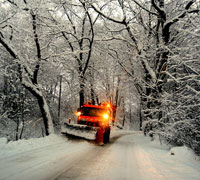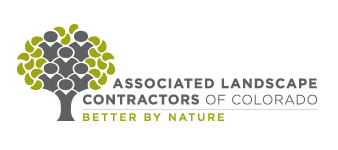|
Written by Troy D. Sibelius
|
|
Tuesday, November 12, 2019 04:00 AM |
|
 Taking simple safety precautions will help avoid unnecessary accidents this winter. Quick and efficient snow removal is essential to the green industry in Colorado. Snow buildup presents a hazard to both drivers and pedestrians. When clearing snow, it is imperative your crews pay special attention to their surroundings and not sacrifice safety for speed. Taking simple safety precautions will help avoid unnecessary accidents this winter. Quick and efficient snow removal is essential to the green industry in Colorado. Snow buildup presents a hazard to both drivers and pedestrians. When clearing snow, it is imperative your crews pay special attention to their surroundings and not sacrifice safety for speed.
Before your crews begin
Preempt problems by taking some time to check these important details before the first snowfall:
- Check the areas to be plowed and look for objects that could be easily hidden by snow. Make notes of curbs, speed bumps and other things that could damage the plow and more importantly become hidden obstacles that create slip-and fall-hazards for pedestrians.
- Be sure employees familiarize themselves with the owner’s manual and operations of the plow.
- Check all vehicle lights to make sure they are working properly. This includes both the lights on the vehicle and the lights on the blade.
- For good traction, always ensure an all-wheel-drive vehicle has good tires and that all vehicles have well maintained brakes, and make sure the truck’s weight is balanced. If necessary, add weight to the back of the truck, past the rear axle, to balance out the weight of the plow.
- Check all electrical connections between the truck and plow to make sure they are operational.
- Check the plow itself for any signs of damage, such as cracked welds or hydraulic fuel leaks.
- Check the cutting edge to make sure it is not worn down to the point where the ground may come in contact with the main portion of the blade.
- Remind employees to get adequate rest so they are not drowsy or inattentive while behind the wheel. Transporting a plow While driving on public roads with a plow attached to a vehicle, remember to:
- Keep the plow as far off the ground as possible without blocking the headlights or drivers’ vision.
- Always drive with the blade angled to the right. This will prevent it from accidentally catching on the curb.
- Pay special attention to the speed limit and in winter driving conditions, drive slower than speed limit if conditions require it.
While plowing
- Make sure drivers know where to pile the snow before they start.
- When beginning a pass with the plow, always start moving and then drop the blade.
- Begin to stop as you approach the end of your pass. Do not let the plow slam full speed into already-piled snow.
- Raise the blade before moving into position to make another pass.
- Always wear seatbelts no matter where plowing. Hidden objects could cause vehicle to stop suddenly.
- Always turn around and look while driving in reverse. Do not rely solely on vehicle mirrors or backup cameras.
- Never pile snow near mailboxes, fire hydrants, electrical boxes or dumpsters.
- If there is traffic in the area, be especially careful of people and other vehicles.
- Check with local regulations before moving snow across a roadway. It may be illegal to do so in some areas.
Bottom line: Ensure your employees’ safety and also protect your equipment!
—Troy D. Sibelius, FASLA, CIC, CRM, is an Executive Vice President and Client Advisor at The Buckner Company. He also has a Landscape Architecture degree from CSU and works extensively with landscape contractors and landscape architects on their risk management and commercial insurance programs.
This story is an excerpt from an article that originally appeared in the November-December 2019 issue of Colorado Green magazine.
Read more in this issue of Colorado Green NOW:
Temperature swings took a toll on trees
DOL proposed rule clarifies overtime calculation for some workers
VIDEO: Using graywater for irrigation
Landscape Industry Certification by the numbers [INFOGRAPHIC]
|


 Taking simple safety precautions will help avoid unnecessary accidents this winter. Quick and efficient snow removal is essential to the green industry in Colorado. Snow buildup presents a hazard to both drivers and pedestrians. When clearing snow, it is imperative your crews pay special attention to their surroundings and not sacrifice safety for speed.
Taking simple safety precautions will help avoid unnecessary accidents this winter. Quick and efficient snow removal is essential to the green industry in Colorado. Snow buildup presents a hazard to both drivers and pedestrians. When clearing snow, it is imperative your crews pay special attention to their surroundings and not sacrifice safety for speed.
